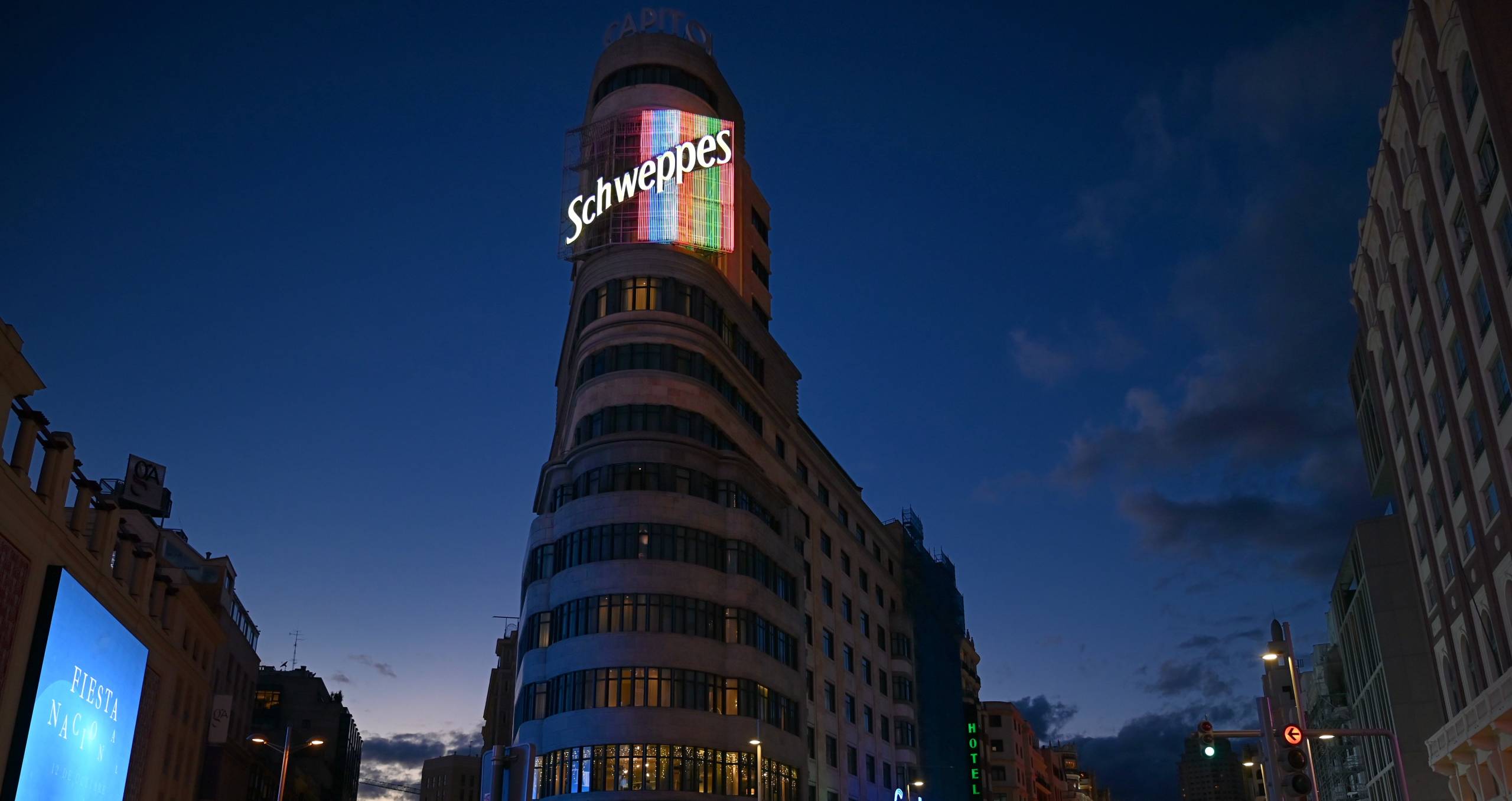The advertising industry generates far more impacts than we might think. When we talk about each person receiving an average of 6,000 ad impacts of advertisements per day, it may seem like an exaggeration, but it is a reality.
In an age where image is everything, there are elements of advertising that have managed to transcend their commercial function to become true cultural and tourist icons. Is it a poster? A building? A billboard? Sometimes it is both: marketing and visual heritage.
The Schweppes Building in Madrid
Located in the heart of Madrid’s Gran Vía, the Capitol building, best known for its luminous Schweppes sign, is a clear example of this phenomenon. The silhouette of the neon sign is an inseparable part of the Madrid skyline. What began as an advertising campaign in the 1970s has become a pop symbol of the city, immortalised even in the cinema, as in Álex de la Iglesia’s film The Day of the Beast.
Times Square: the temple of advertisements
Few places in the world are as famous for their advertisements as New York’s Times Square. Millions of tourists flock here every year not only for Broadway musicals or New Year’s Eve celebrations, but to soak in the visual spectacle of LED screens, giant billboards and neon that envelop the buildings. It is advertising, yes, but also a living monument to consumer culture and modernity.
The Hollywood poster: disguised advertising?
Although today it is one of the world’s most recognisable icons, the famous Hollywood sign was born in 1923 as an advertising strategy to sell land in a development called ‘Hollywoodland’. Over the years, it lost the last letters and became a symbol of cinema and the American dream. A curious case where the advertising intention was diluted until it became a cultural symbol.
Coca-Cola in Piccadilly Circus
Piccadilly Circus is known as Britain’s version of Times Square. Without having the number of screens of the New York square, it stands out for its luminous signs. Of all the brands advertised, Coca-Cola is the one that has maintained its image on one of the most emblematic screens of the place for the longest time. For many visitors, seeing Coca-Cola advertising here is part of the sightseeing tour, almost like visiting Big Ben or the London Eye.
The Corona poster in Playa del Carmen (Mexico)
In the Riviera Maya, where the beach and the sun are the protagonists, the Corona brand has been able to integrate itself into the environment in a subtle but effective way. Some beachfront bars and tourist viewpoints have placed large letters with the beer logo as if they were part of the landscape itself. An attraction that in the age of Instagram is very appealing to travellers, who share their selfies in front of these signs, as if they were just another monument.
The Osborne bull in Spain and Latin America
Although it is a Spanish symbol, the famous Osborne bull, originally a billboard for brandy, has been adopted in different regions of Latin America as a cultural icon. In the case of Spain, its presence is less than a few years ago, but it is still an attraction for road trips, as it is in some countries such as Mexico and Argentina.
The Glico doll in Osaka (Japan)
In Osaka’s Dotonbori district, there is a sign that gets more flashes than many works of art: the famous Glico runner. This luminous giant, depicting an athlete raising his arms in victory, is one of the most sought-after postcards for tourists visiting the city. The image has changed over the years, but the spirit of the brand remains one of Japan’s most powerful visual icons.
Advertising or visual culture?
These examples raise an interesting question: when does an advertisement cease to be just marketing and become part of a city’s heritage? Perhaps the answer lies in persistence, in the emotional bond it establishes with people, or in how advertising is organically embedded in the urban landscape.
The truth is that, although their initial purpose may have been to sell, many of these structures have ended up telling stories, marking generations and capturing the imagination of millions of tourists. Thus, advertising, far from being ephemeral, sometimes becomes eternal.






